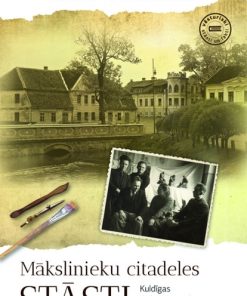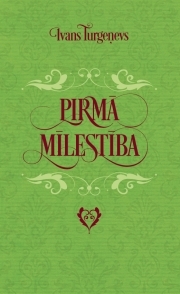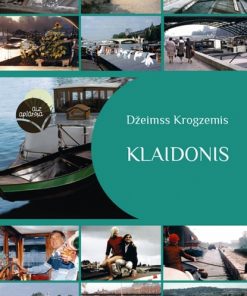Rīgas jūgendstils. Interjers, Art Nouveau in Riga. The Interior
5,25€
Nav noliktavā
Laiks ir telpa, kurai cauri virzoties katrs laikmeta nogrieznis ievieš savas iezīmes. Savā ziņā tās ir apslēptās jaunrades kaislības, kuras mīt seno īres namu sienās, veidojot stāstījumu, un sniedz vēstījumu par to, kas bijis. Šis stāsts ir nedaudz noslēpumains un aizraujošs, ja izdodas atrast, ieraudzīt un saglabāt šo jūgendstila simbolisma un misticisma kopējo dzīves ainu. Pilsēta bija kā fons jūgendstila laikam, kad notika modernās pilsētas tēla veidošana, nemitīgi jaunu dizaina formu meklējumi, kurus ieviesa praksē. Ikdienas dzīve vairs nebija pelēcīga, tā strauji aktualizēja izklaides vietu nepieciešamību, uzskatus par savdabīgo un skaisto, par kritēriju īslaicīgumu un uzskatu veidošanos Jaunā gadsimta skrējienā. Cilvēka dzīves telpas izmaiņas skāra interjera veidolu, kas lēni, tomēr variablāk pieņēma aktualitātes un aktivizēja kultūras dzīvi pilsētā, tā papildinot vijīgā jūgendstila uzvarošo gājienu.
Time is a space on which every era leaves its signature as it passes through. The hidden passions of creative activity are hidden in the walls of old apartment buildings, relating their story and informing us of that which once was. This story is a bit mysterious and fascinating given that we manage to find, perceive and preserve the symbolism and mysticism of the overall art nouveau way of life. The city was the background of the art nouveau period – a time when the image of a modern city was being formed, there was a constant effort to seek new design forms which were also introduced in practice. Daily life was no longer grey, it quickly raised the issue of the necessity of entertainment venues and introduced views and opinions about the original and the beautiful, the temporality of criteria and opinions in the rush of the New Era. The changes in human living space touched on interior forms, which slowly but surely accepted current tendencies and activated a life of culture in the city, thus supplementing the victory march of the lithe and supple art nouveau.
| Svars | 362 g |
|---|---|
| Dimensijas | 16,5 × 23,5 cm |
Saistītie Produkti
Jumavas grāmatas
Jumavas grāmatas
Jumavas grāmatas
Jumavas grāmatas
Jumavas grāmatas
Jumavas grāmatas
Jumavas grāmatas
Jumavas grāmatas










